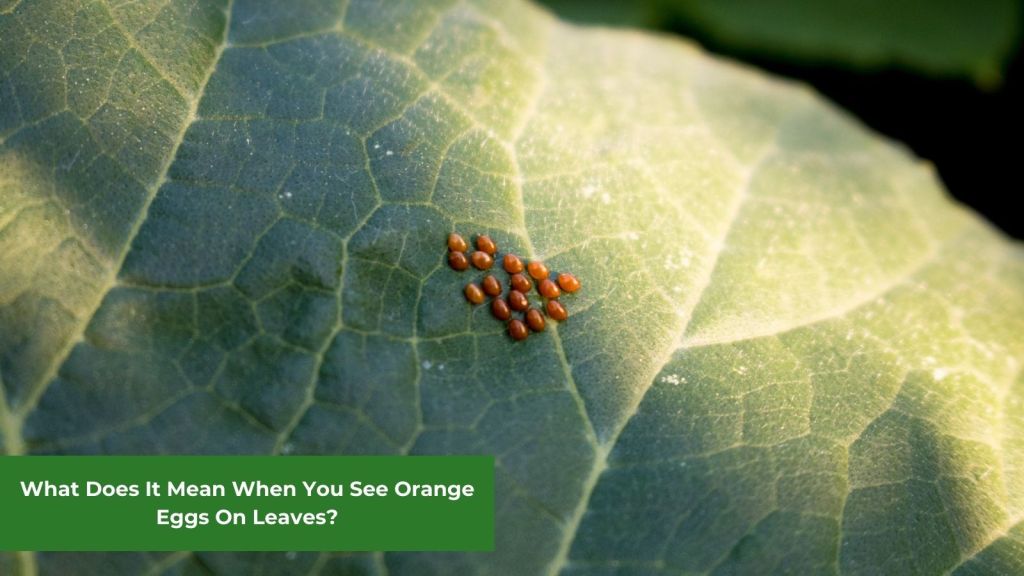Are you puzzled by the sudden appearance of green eggs on your plant leaves? Don’t worry. You’re not alone. Discovering green eggs on your beloved plants can raise questions and concerns about their health and well-being. However, understanding the possible causes behind these intriguing green eggs is the first step in effectively addressing the issue. Let’s discover this topic in my article!
When You See Things Like “Green Eggs” On Leaves, They Could Be …
- Leaf Variegation: Some plant species naturally have green spots or patterns on their leaves as a part of their variegation. This is not a cause for concern and is often considered desirable.
- Fungal Infections: Certain fungal infections, such as leaf spot diseases, can manifest as green spots on plant leaves. A darker border may surround these spots and can gradually grow in size—factors like high humidity, poor air circulation, or overwatering commonly cause fungal infections.
- Insect Damage: Certain insects, like aphids or mites, can cause stippling or small green spots on plant leaves as they feed on the leaf tissue. This damage can weaken the plant and lead to other issues if left untreated.
- Nutrient Deficiencies: Green spots on leaves can also be a sign of nutrient deficiencies, such as iron or magnesium deficiency. These deficiencies can result from imbalanced soil pH or inadequate nutrient uptake.
- Environmental Stress: Environmental factors like excessive sunlight exposure, extreme temperatures, or chemical exposure can cause green spots or discoloration on plant leaves.
And if there is none of the above causes, we get to see the following section:
Insects That Lay Green Eggs On Leaves
#1. Tomato Hornworm (Manduca quinquemaculata)
Tomato Hornworm eggs are tiny and round and are found to be light green when the eggs nearly hatch (source). The egg groups are often found on the underside of tomato plant leaves. These egg groups are usually mistaken for rice-like parasites. They can be hard to see if you’re not looking closely. When the eggs hatch, the larvae come out and start eating the leaves of the tomato plants, causing a lot of damage.

A quick treatment summary:
- Inspect your tomato plants regularly and remove any clusters of small white or light green eggs found on the undersides of the leaves.
- Encourage natural predators like wasps and beneficial insects, and consider using organic insecticides if needed.
- Plant companion herbs and flowers (like basils and marigolds) to deter Tomato Hornworms.
Reference: Tomato hornworms in home gardens – University Of Minnesota Extension.
#2. Fall Webworm (Hyphantria cunea)
Fall Webworm eggs are small, round, and usually found in masses on the undersides of leaves or sometimes on tree branches. These eggs seem a bit “iridescent green in color.“ They are covered in a protective layer of hair. The presence of these eggs is an early indication of potential infestation by Fall Webworms. The larvae emerging after the hatch begins to construct silken webs that envelop the foliage of trees. These webs serve as shelters where the larvae feed and grow, causing defoliation and aesthetic damage to affected trees.


A treatment note:
- Inspect your trees for egg masses on the undersides of leaves or branches.
- Remove the eggs manually by scraping them off or prune infested branches.
- Encourage natural predators like birds and wasps to control the population.
- If necessary, use organic insecticides labeled ‘for caterpillar control.’
Reference: Fall webworm (Hyphantria cunea) | Featured creatures Entomology & Nematology – University Of Florida.
Conclusion
It is crucial to address the presence of green eggs on plant leaves promptly. By identifying the cause and taking appropriate action, such as implementing preventive measures and monitoring plant health, you can protect your plants from potential pests or diseases. If you see little green eggs on leaves, they can be Tomato hornworms or Fall Webworms.
Do you have the same experience meeting these insects? Let me know if you spot other creatures in the comment section or email me. Here are my suggestions for your upcoming reads:
















![[GHC Featured Image] What Is Happening When You See Green Eggs On Leaves green eggs on leaves featured image](https://greenhousecenter.net/wp-content/uploads/2023/07/GHC-Featured-Image-What-Is-Happening-When-You-See-Green-Eggs-On-Leaves-696x392.jpg)




